Mainland Ecuador; January 7-12, 2019
All photos are © Marshall Faintich
January 9; Quito to Mashpi Lodge
We left Quito early in the morning via van on our 70 mile, 3 hour long drive to Mashpi Lodge. Quito is located 0 degrees, 10 minutes south of the equator, and Mashpi is 0 degrees, 10 minutes north of the equator. The first part of this route took us through the eastern side of the Andes Mountain range, where Pacific clouds are often blocked by the high ridges. The terrain here was fairly dry and mostly brown. As we crossed the equator, we got a good look at the Ecuadorian momument marking the boundary between the two hemispheres. We also got a good look at the snow covered Cayambe Volcano, that reaches 18,996 feet above sea level, and at 15,387 feet on its south slope, is the highest point on Earth crossed by the equator.
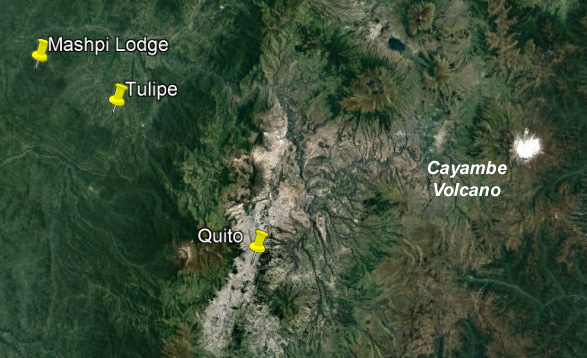
Trip map
| | |
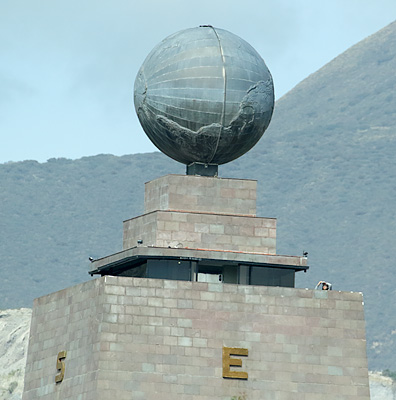
Crossing the equator
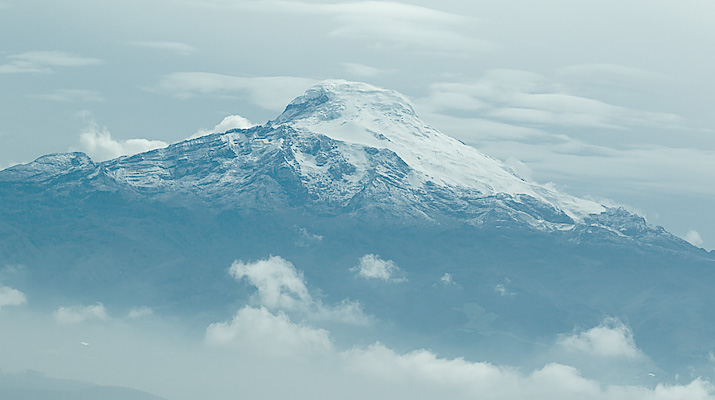
Cayambe Volcano
| | |
As soon as we crossed over to the western side of the Andes, the terrain turned densely green with vegetation. I saw a variety of perched and flying birds during the van ride, but the only ones I could identify or photograph were flying Black and Turkey Vultures, and Tropical Kingbirds perched on wires. We had a planned stop at the archeological site of Tulipe, once home to the Yumbos, a pre-Inca civilization. As we approached Tulipe, I saw a small gray owl or hawk perched atop a pole, but didn't get a good enough look at it to identify the species. We had a few minutes at Tulipe, and I got a few more life birds.
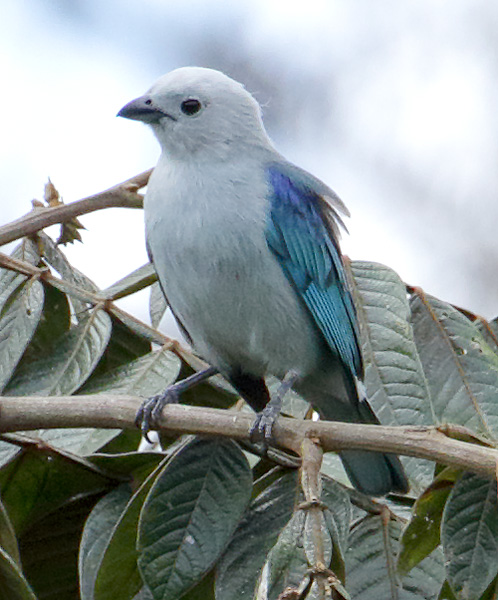
Blue-gray Tanager
There were several Blue-and-white Swallows at Tulipe. These birds looked like our North American Tree Swallows, but are a different species.
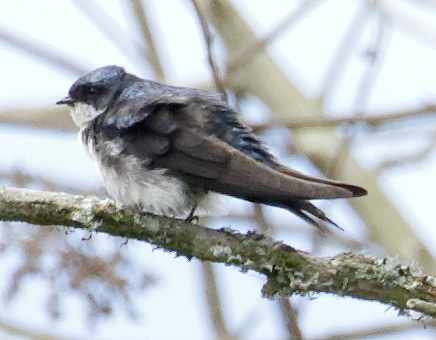
Blue-and-white Swallow
I photographed a Black Phoebe, and a male and female White-lined Tanager, and was only able to identify the tanager species by seeing both birds together in the same tree.
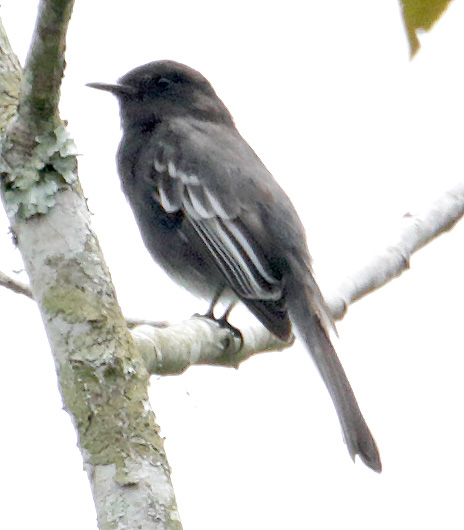
Black Phoebe
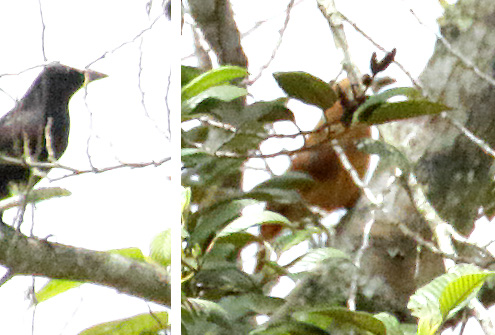
Male and female White-lined Tanager
We continued on to the Mashpi Lodge. The road soon became gravel, with lots of turns and bumps. It reminded me of some of the poor fire roads in the Allegheny Mountains where I go birding in Virginia. Our van driver stopped when he saw a pair of Black-cheeked Woodpeckers, and I was able to get out for a few photos.
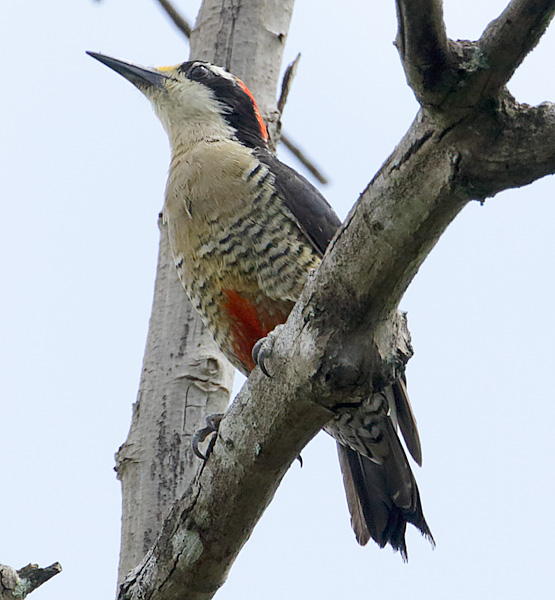
Black-cheeked Woodpecker
We entered the gate to the Mashpi Lodge, and soon saw a Smooth-billed Ani in the road, and several Lemon-rumped Tanagers in the vegetation along the road.
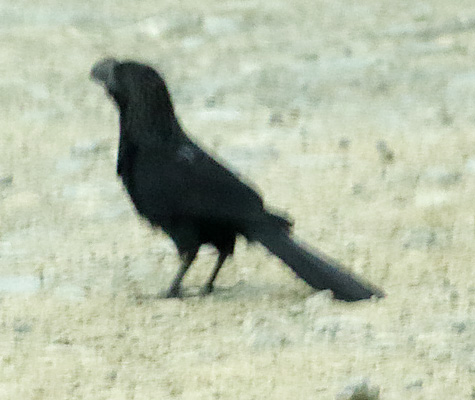
Smooth-billed Ani
January 9; Mashpi Lodge
The Mashpi Lodge was beautiful. Located at 3,117 feet above sea level, it is surrounded by a 3200 acre private reserve that ranges in altitude from 1,640 to 4,000 feet above sea level. An entire wall of each guest room is glass that offers a view of the cloud forest. More than 400 species of birds have been seen there.
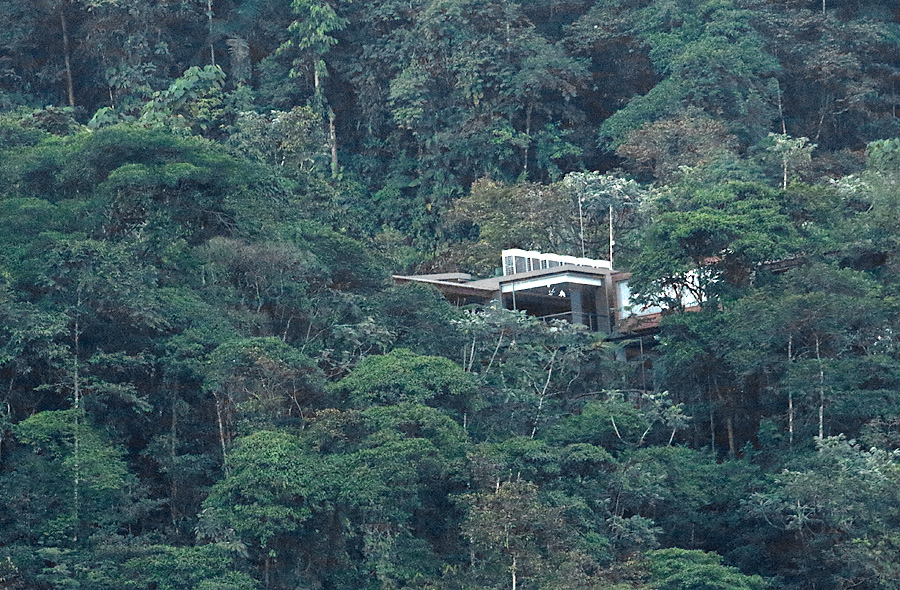
Mashpi Lodge
| | |
Soon after we unpacked, I did a little exploring around the lodge, and saw a Tropical Parula. I had heard this species in the Lower Rio Grande Valley of Texas, but never got to see one there. Blue-and-white Swallows and a Tropical Kingbird were atop the lodge.
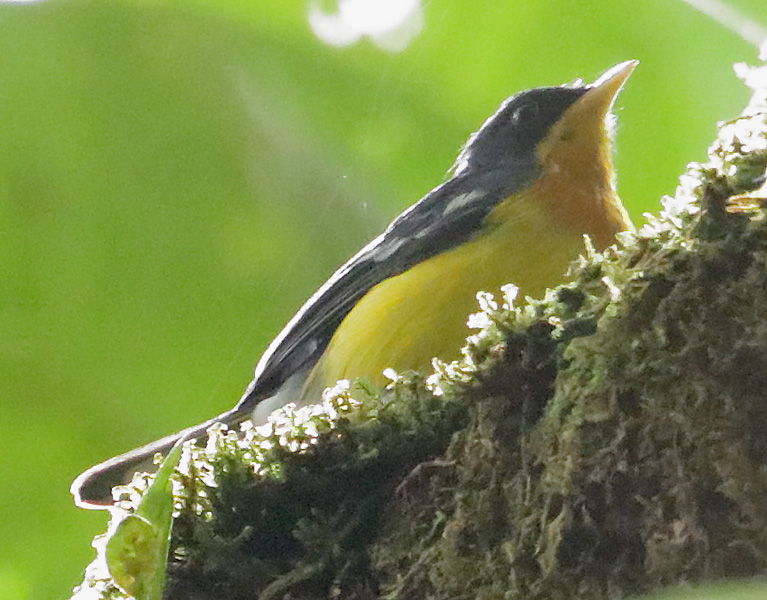
Tropical Parula
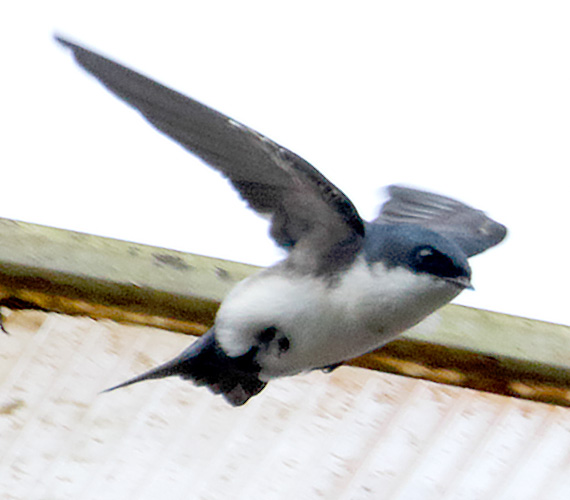
Blue-and-white Swallow
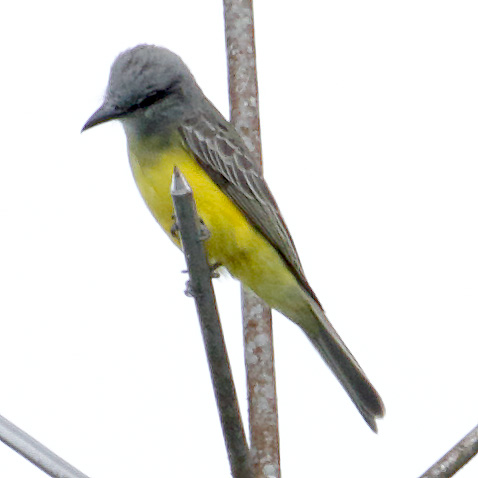
Tropical Kingbird
Our group of five was assigned a naturalist for our stay, and we met with him at the front of the lodge for our afternoon hike. There were a few Moss-backed Tanagers welcoming our arrival.
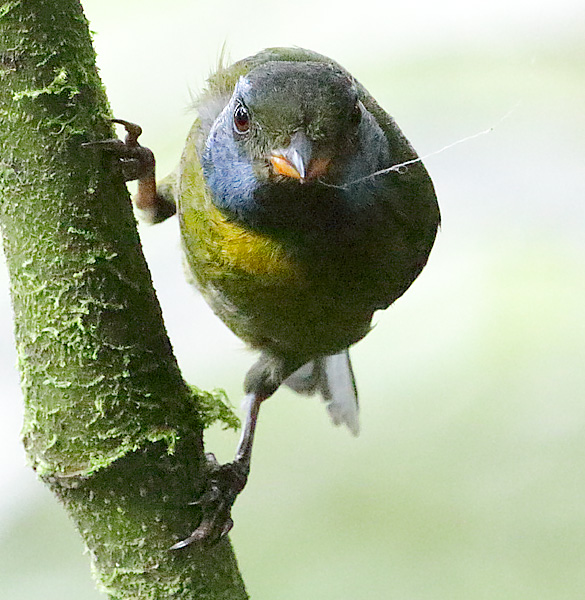
Moss-backed Tanager
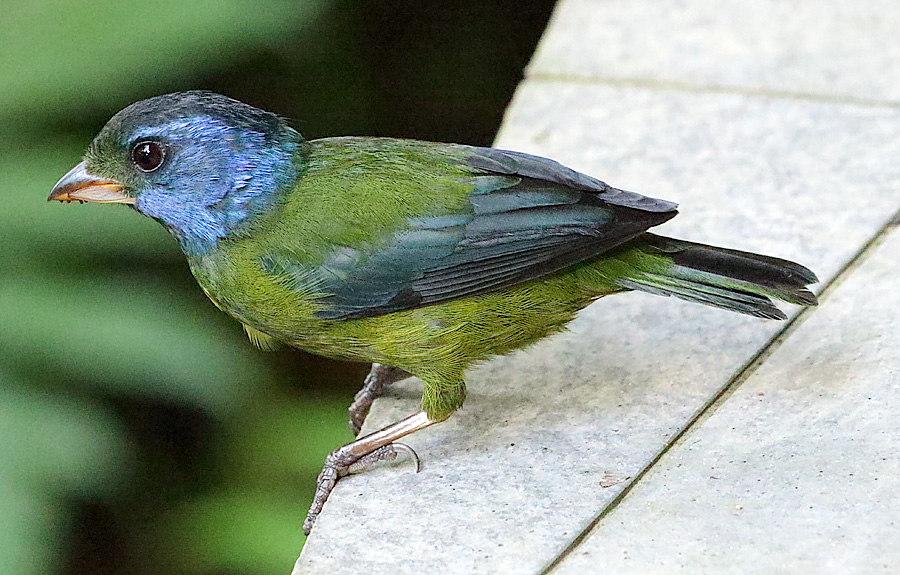
Moss-backed Tanager
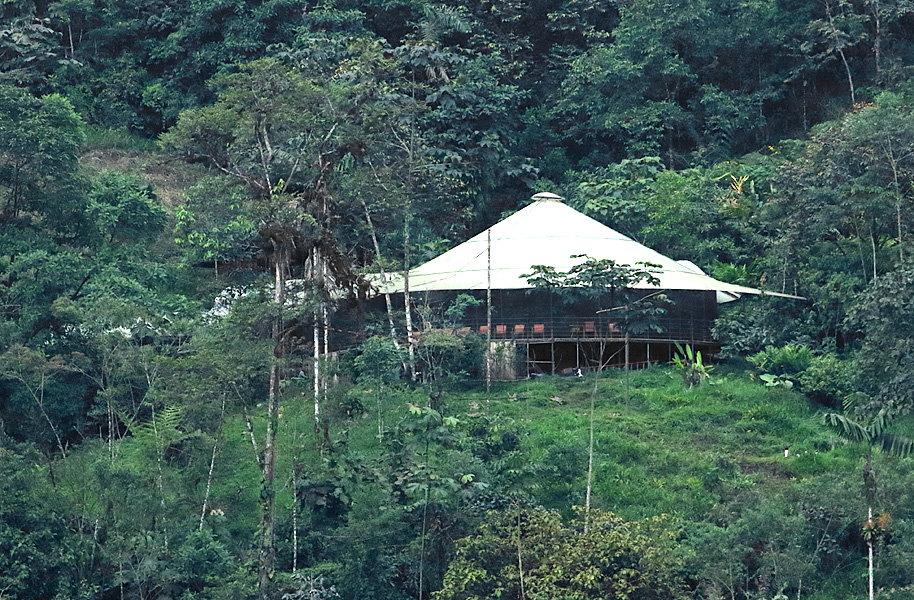
Life Center
We hiked to the Mashpi Lodge Life Center, where there are exhibits and a butterfly enclosure, as well as an observation deck. Naturalists had placed bananas just below the deck to attract birds and other wildlife. There were forest flowers and butterflies all around this area.
| | |
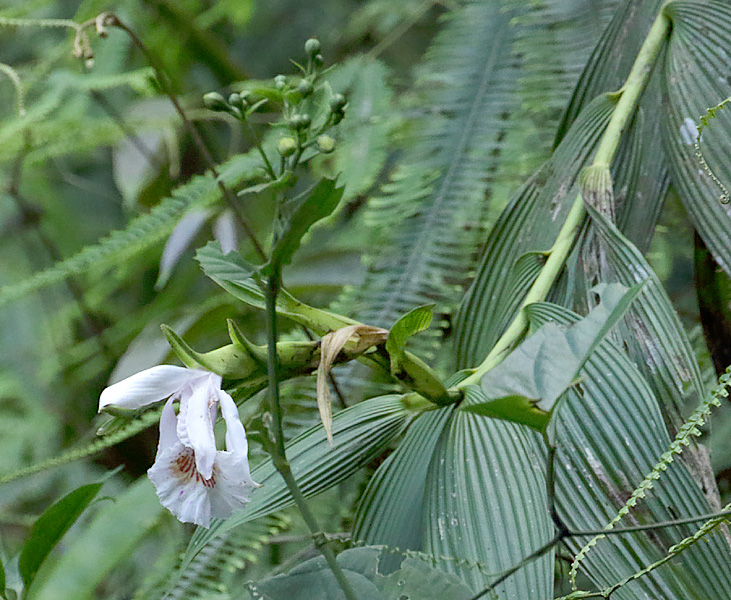
Wild Orchid
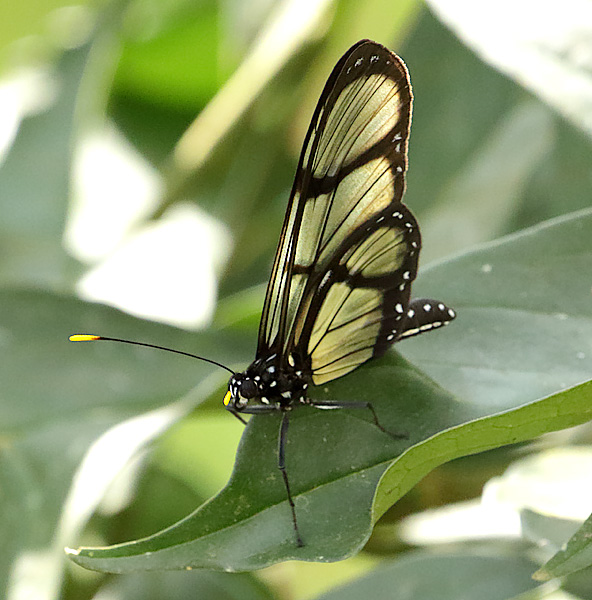
Glass-winged Buttlerfly
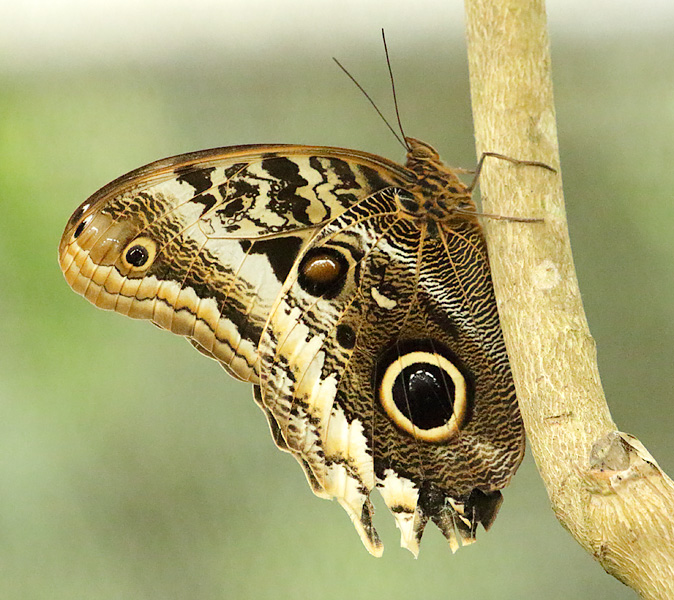
Owl eye Buttlerfly
The bananas certainly did the trick of attracting wildlife. Multiple avian species showed up.
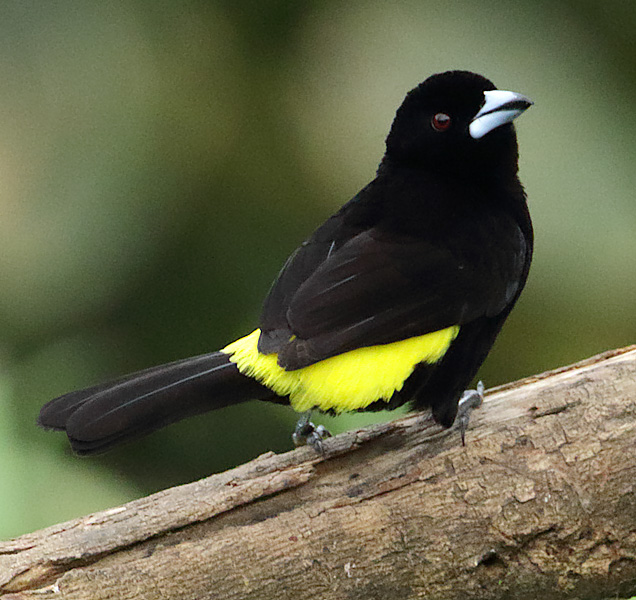
Male Lemon-rumped Tanager
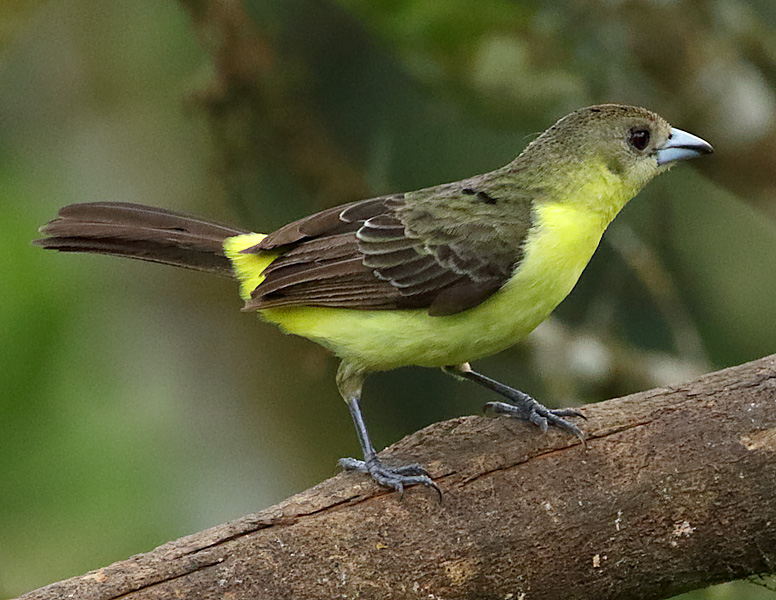
Female Lemon-rumped Tanager
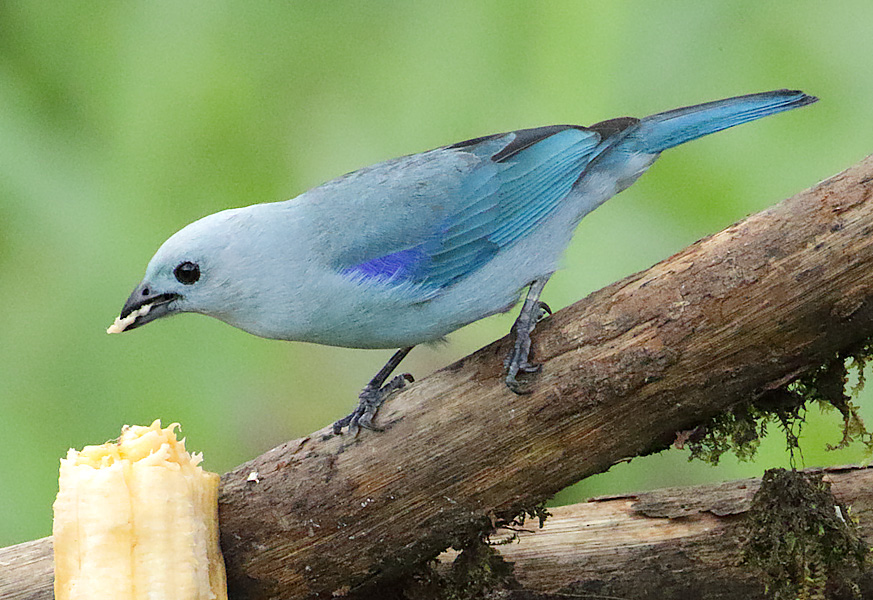
Blue-gray Tanager
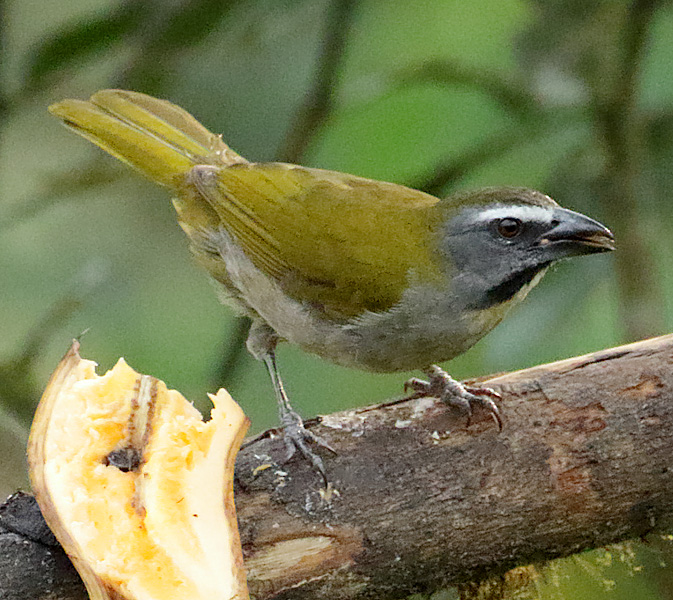
Buff-throated Saltator
Our naturalist pointed out two migrating flycatchers perched near the Life Center. One was an Olive-sided Flycatcher and the other a Western Wood-Pewee. I got a few photos of the Pewee. It looked very brown to me, in contrast to a grayish-brown plumage of this species that I have seen in the Pacific northwest of the US.
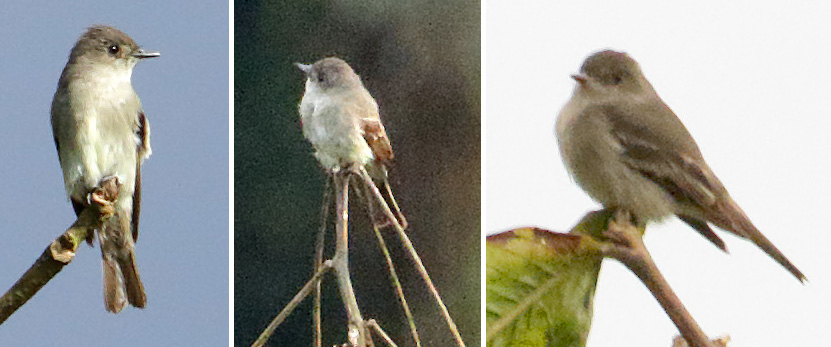
Western Wood-Pewee
The special treat of this afternoon was the arrival of a Pale-mandibled Araçari. First one of them, and then five at the same time!
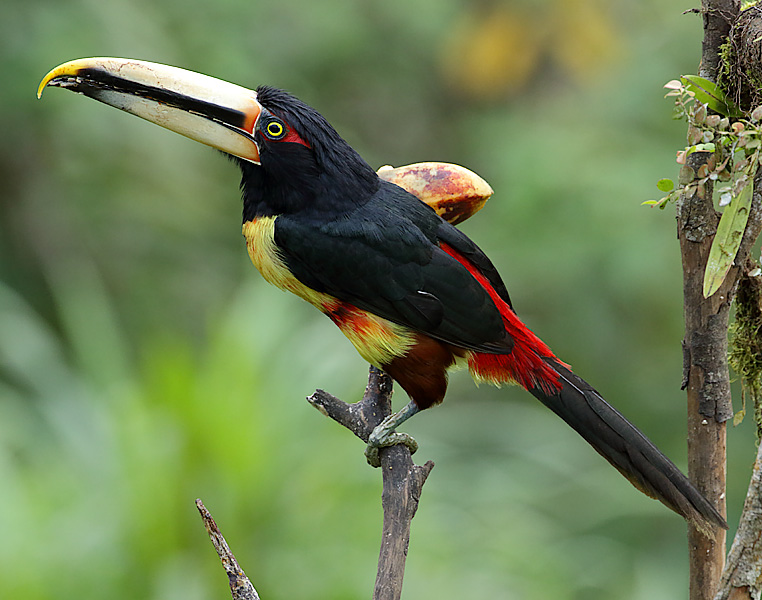
Pale-mandibled Araçari
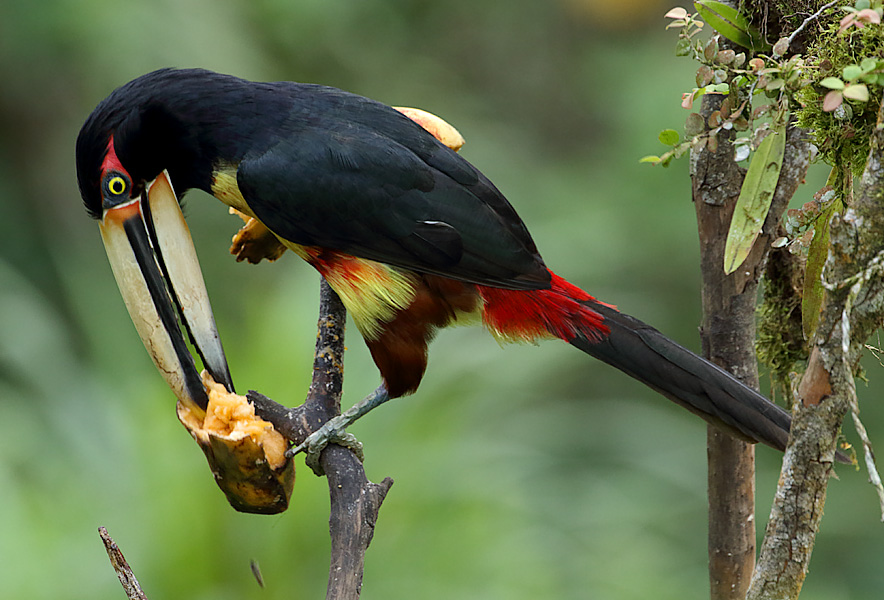
Pale-mandibled Araçari
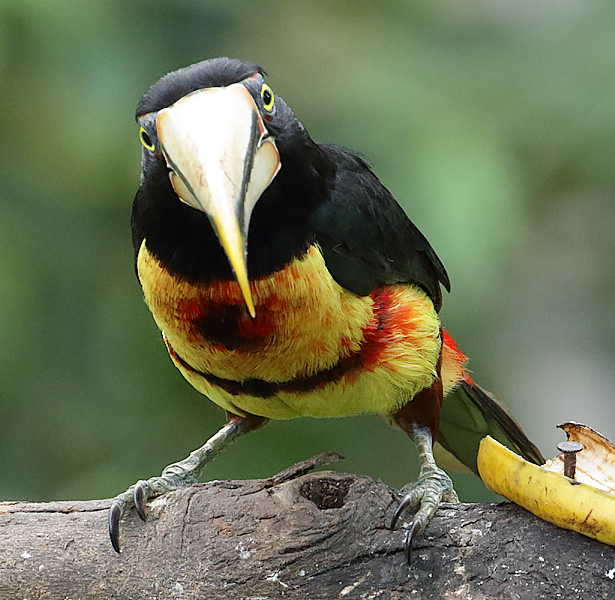
Pale-mandibled Araçari
I saw a distant Rose-faced Parrot through a spotting scope, and was able to photograph a few more, but distant, avian species.
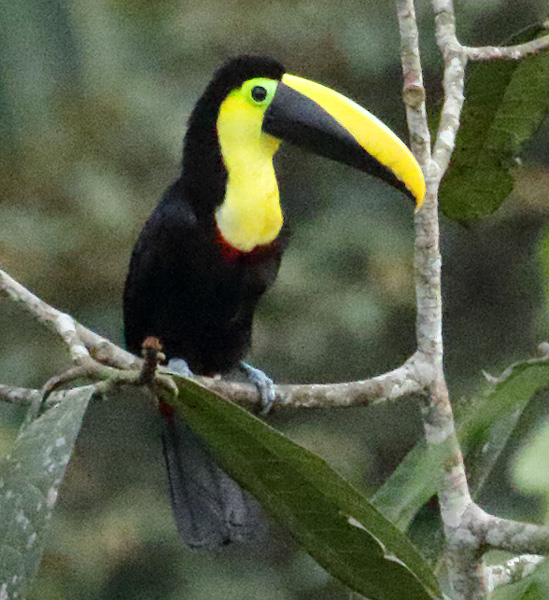
Chocó Toucan
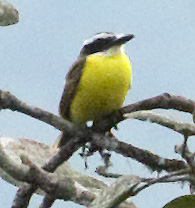
Rusty-margined Flycatcher
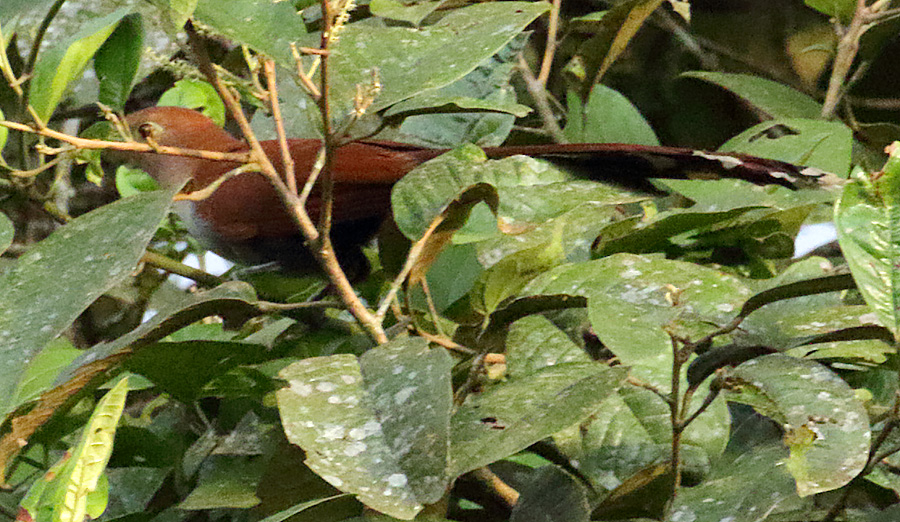
Squirrel Cuckoo
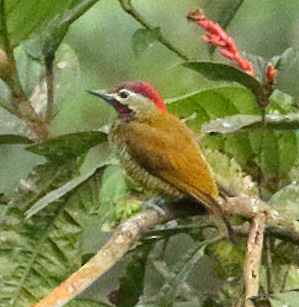
Golden-olive Woodpecker
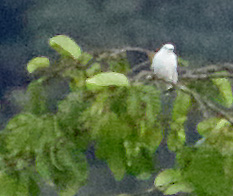
Black-tipped Cotinga
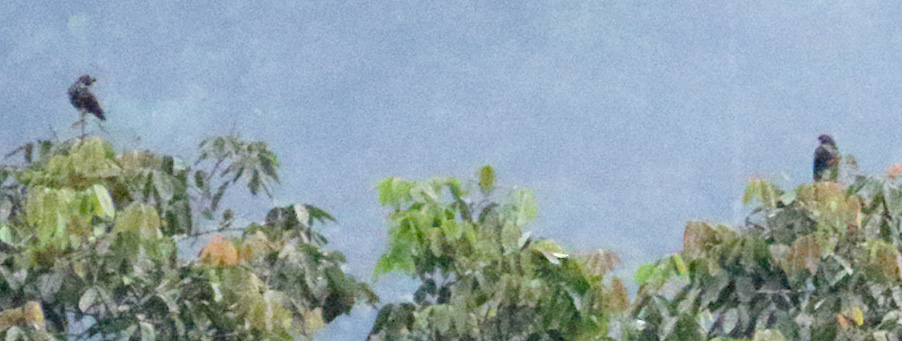
Bronze-winged Parrots(?)
The bananas also attracted a few mammals as well.
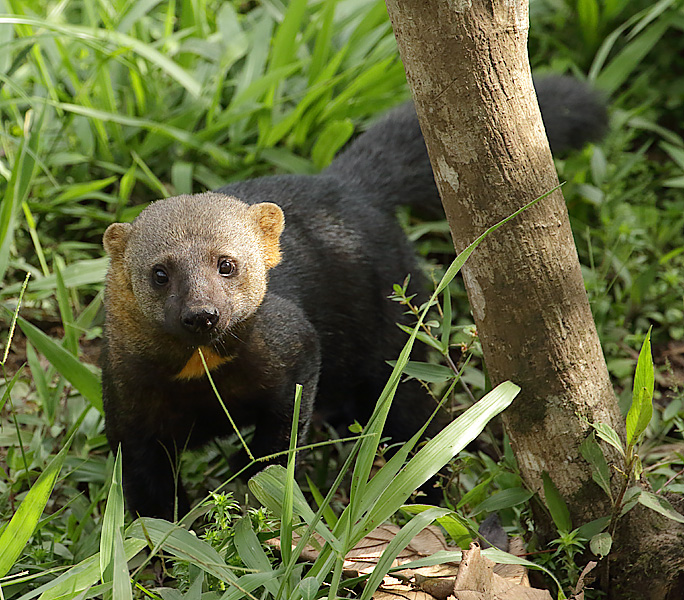
Tayra
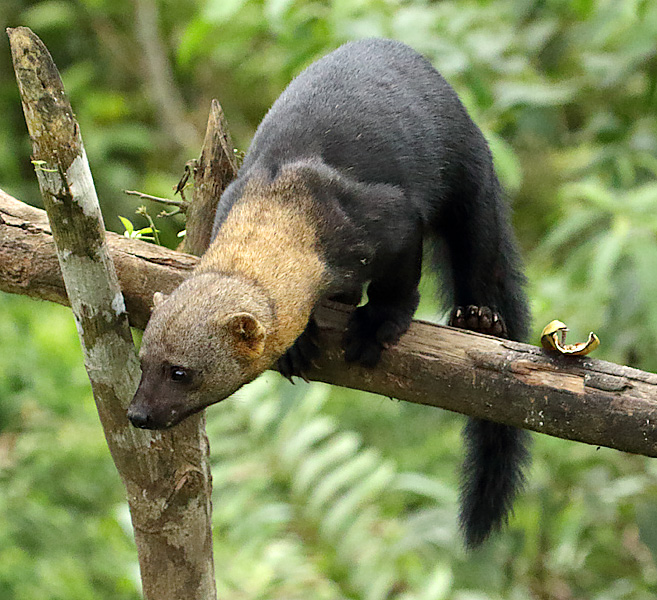
Tayra
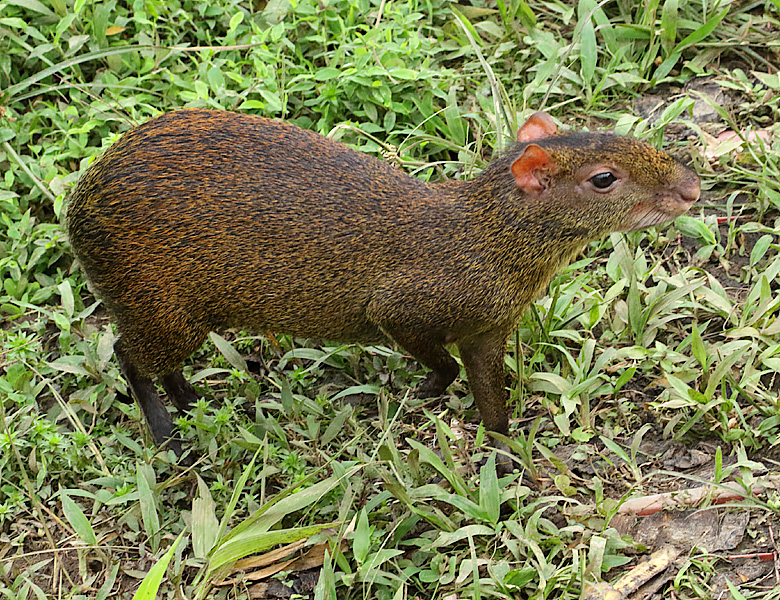
Agouti
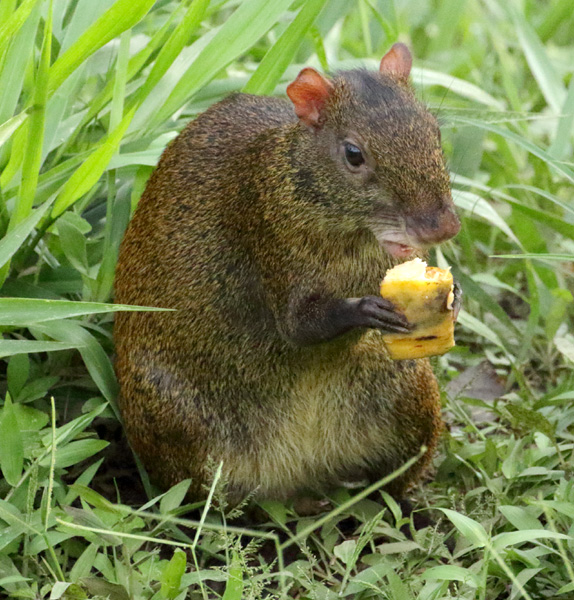
Agouti
Well, that was a good start to our stay at Mashpi Lodge. But the next day was even better!
Click here to continue on the next day at Mashpi Lodge




































